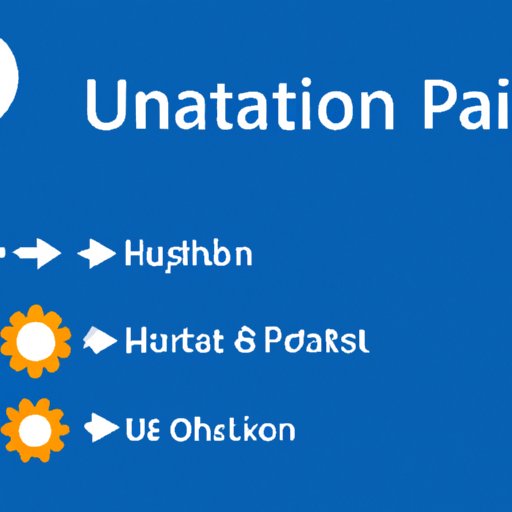Introduction
UiPath Automation is a powerful robotic process automation (RPA) tool that enables users to automate repetitive tasks quickly and easily. It is used in a variety of industries, from finance and healthcare to manufacturing and retail. With UiPath Automation, users can create automated workflows that help streamline business processes, improve accuracy, and increase productivity.
Why Use UiPath Automation?
UiPath Automation is an invaluable tool for businesses looking to increase efficiency and reduce costs. By automating mundane, manual tasks, UiPath Automation helps free up employees’ time for higher value activities, such as customer service or problem solving. Additionally, UiPath Automation helps reduce errors and improve accuracy by eliminating human error from the equation. According to a study conducted by McKinsey Global Institute, “Automation could raise productivity growth globally by 0.8 to 1.4 percent annually.”

Understanding the Basics of UiPath Automation
The first step to interacting with UiPath Automation is understanding the basics of the tool. UiPath Automation consists of two main components: process flows and activities. Process flows are the building blocks of UiPath Automation. They are graphical representations of a sequence of activities that need to be completed in order to achieve a desired outcome. Activities are the individual steps within a process flow. They are responsible for carrying out the actual tasks that need to be completed.
Developing a Process Flow to Interact with UiPath Automation
Once you understand the basics of UiPath Automation, you can begin developing a process flow to interact with the tool. The first step is to define the inputs and outputs of the process flow. Inputs are the pieces of data that need to be processed by the process flow, while outputs are the resulting pieces of data that are generated. Once you have defined your inputs and outputs, you can start building sequences and flows. Sequences are linear sets of activities that are executed in the order they are listed. Flows are more complex structures that allow for branching and looping, allowing for more complex decision-making within the process flow.
Utilizing UiPath Activities to Create Interactions
The next step is to utilize UiPath activities to create interactions. Activities are the individual steps within a process flow that carry out the tasks needed to complete the process. UiPath activities can be used to work with variables and arguments, which are pieces of data used by the activities to perform their tasks. Additionally, control flow statements can be used to create conditions within the process flow, allowing for more complex decision-making.

Implementing Data Validation and Outputs with UiPath Automation
Once the process flow is built, it is important to ensure that the data being processed is valid. Data validation can be implemented using activities that check the input data against predefined criteria. Once the data has been validated, outputs can then be generated using activities that produce the results of the process flow. These outputs can be stored in databases or used to trigger other processes.
Integrating UiPath Automation into Existing Applications
In addition to creating process flows, UiPath Automation can be integrated into existing applications. This allows for seamless communication between UiPath and the other application, allowing the two systems to interact with each other. This can be done by connecting UiPath to existing systems or by creating integrations with APIs.

Troubleshooting Common Issues with UiPath Automation
Like any software, UiPath Automation can experience issues. When this happens, it is important to have a plan for troubleshooting. Debugging errors in processes can help identify the source of the issue and provide clues on how to fix it. Additionally, there are some common troubleshooting techniques that can be used to diagnose and resolve issues with UiPath Automation.
Conclusion
UiPath Automation is a powerful tool that can be used to automate repetitive tasks and streamline business processes. To interact with UiPath Automation, users must understand the basics of the tool, develop a process flow, utilize activities to create interactions, implement data validation and outputs, integrate the automation into existing applications, and troubleshoot any issues that may arise. With these steps, users can successfully interact with UiPath Automation to maximize efficiency and improve workflow.
(Note: Is this article not meeting your expectations? Do you have knowledge or insights to share? Unlock new opportunities and expand your reach by joining our authors team. Click Registration to join us and share your expertise with our readers.)
